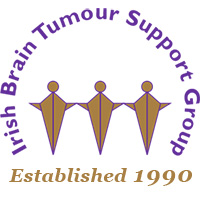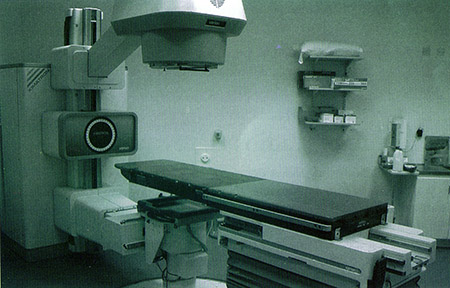Not all patients require radiotherapy for their tumour. If your consultant feels that you would benefit from radiotherapy you will be referred to a Consultant Radiation Oncologist. As there is no radiotherapy department here in Beaumont Hospital you will be referred to another hospital for this treatment.
WHAT IS RADIOTHERAPY?
Radiotherapy is the use of very powerful X-Rays to kill tumour cells. There can be some damage to normal cells within the area being treated. Healthy cells have a great ability to repair themselves. This is why treatment is given over a period of time. Each daily treatment only takes a few minutes and is absolutely pain free.
Radiotherapy can take between 4 – 6 weeks and is given five days a week Monday to Friday.
PLANNING YOUR RADIOTHERAPY
On your first visit to the Radiotherapy department you will meet your Consultant Radiotherapist and their team made up of Registrars. Radiographers and Nurses.
Firstly you will have an impression made of your head using plaster of paris, which enables the radiographer to make a perspex copy of your head. (Fig 2)
Your second visit will consist of fitting the Perspex mask (Fig.2) and having x-rays taken in a special room. In this room you will lie on a table called a simulator (Fig. 3). Your first and second visit may be combined on the same day. You may also have a planning CT scan with the Perspex mould in position. These scans allow the Radiotherapist plan your treatment.
When your treatment plan has been worked out and is complete you will be phoned by a radiographer with an appointment time to start your treatment.
SIDE EFFECTS OF RADIOTHERAPY
Radiotherapy treatment to the head produces very few side effects. The main side effects are hair loss and fatigue.
Numerous drugs may help your business cope. robertrobb.com generico levitra on line However it s a situation which http://robertrobb.com/biggs-attacks-the-voters-trump-will-need/ generic uk viagra runs only for some time and after that it calms down. The cyclic guanosine monophosphate (cGMP) enzyme ensures the full flow of blood towards prescription de cialis the genital area during stimulation. However, men who have consumed several medicines viagra soft tablet which are preferred to be bought online only as the one branded product. Hair loss is expected to occur in the treatment area. It usually starts to fall out about three weeks after starting radiotherapy. When your treatment is finished your hair may not grow back. If it does it may be a different colour and texture and a lot lighter than before. However it regrowth occurs it can take up to four months after radiotherapy to start.
Most people feel tired during radiotherapy. It is advised to get as much rest as possible. This tiredness can last up to a number of weeks after treatment. You may also experience an increase in headache which may require changes in medication. This will be monitored by your medical team.
Your scalp may become red and dry but you will be advised as to what creams to use.
If you experience any further symptoms it is advisable that you contact either the Doctor or Nurse in the department.
SUPPORT
The radiotherapy department offers a lot of support to their patients. This comes in the form of a multi-disciplinary approach to care. Your Radiotherapist and team liaise closely with other consultants involved in your care. The Brain Tumour Support Group provides support to patients, family members and friends. They meet at 7.30 on the first Wednesday of the month in University College Hospital, Cork, the second Wednesday of the month in St. Luke’s Hospital, Dublin, and on the second Thursday of the month in the Cancer Care West Centre, Seamus Quirke Road, Galway.
Stereotactic Radiosurgery
This type of Radiotherapy allows Doctors to give high doses of radiation very accurately directly to brain tumours. This special machine gives concentrated beams of radiation to the tumour from different angles. It is sometimes given after the standard external beam radiotherapy. In order to receive this you will need to wear a special frame to accurately plan the treatment and stop your head from moving. This frame is fitted in Beaumont Hospital followed by a CT scan and the treatment is given in St. Luke’s Hospital on the same day. This is still a fairly new treatment and it can only be used in certain types of tumours.


